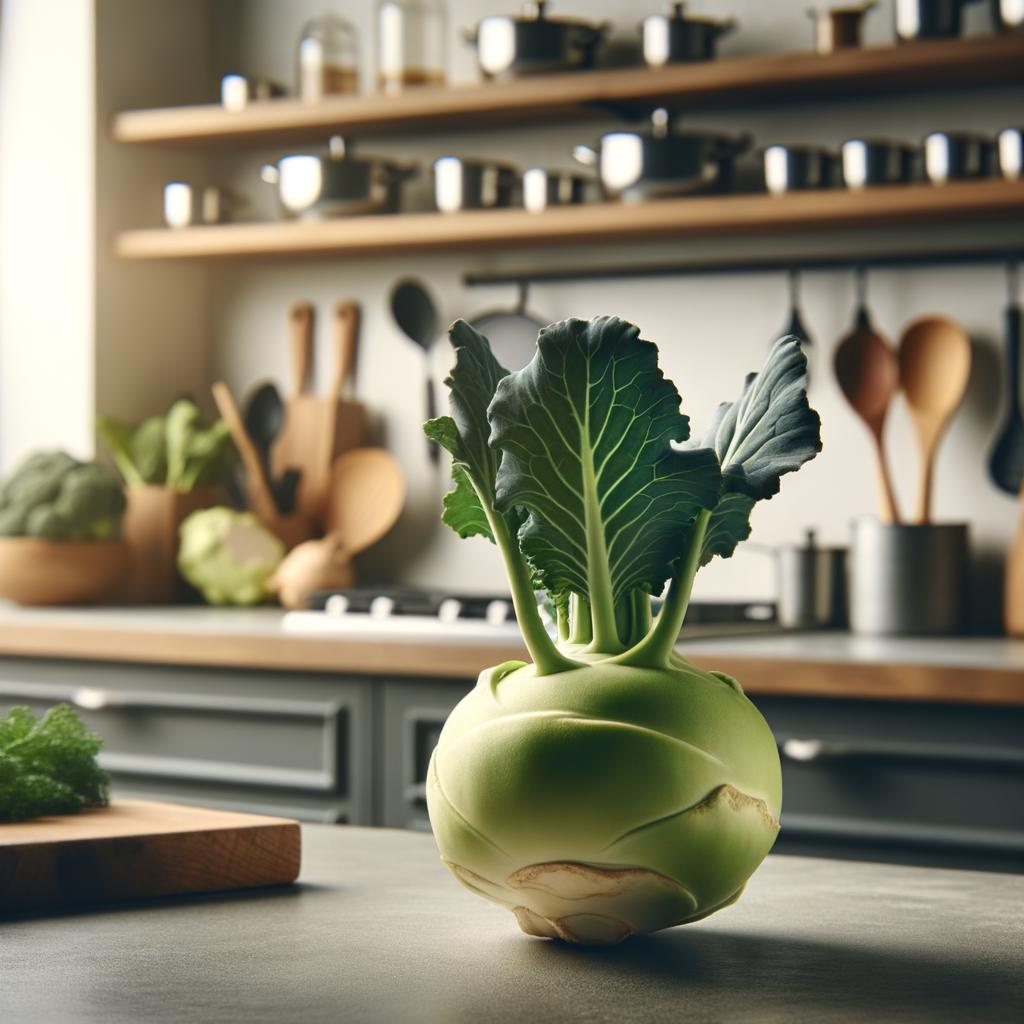Kohlrabi

Description
Kohlrabi, a beautiful, alien-like vegetable, is a member of the Brassica family, akin to cabbage and broccoli. Its name is derived from the German words for cabbage ('kohl') and turnip ('rabi'). The bulbous stem, which is the part primarily used in cooking, can range in color from pale green to regal purple, while its long leafy arms reach out in a delicate, feathery display. The texture of kohlrabi is crisp and juicy, similar to that of an apple, but its flavor is a delightful blend of sweetness and mild spiciness, reminiscent of radish and turnip. A unique characteristic of kohlrabi is that unlike many other vegetables, it doesn’t lose its texture or flavor when cooked.
Primary Uses
Kohlrabi is incredibly versatile in its culinary uses. It can be enjoyed raw in salads, offering a delightful crunch, or cooked in a variety of ways such as roasting, sautéing, or steaming. In Indian cuisine, it is often used in spicy curries and stir-fries. In Central Europe, it's a common ingredient in hearty stews. The leaves are also edible and can be used much like collard greens or kale. Outside the kitchen, kohlrabi has been used in traditional medicine to aid digestion and boost the immune system.
History
The history of kohlrabi is as intriguing as its appearance. It is believed to have been cultivated in Europe around the 14th century and was a staple in the diet of ancient Romans. Over time, it spread to other parts of the world, each embracing it in their unique culinary traditions. In the early 1800s, kohlrabi made its way to America, where it was primarily grown in home gardens. An interesting folklore associated with kohlrabi is that in certain cultures, it is considered a good luck charm for new beginnings and is often gifted to newlyweds or those moving into a new home.
Nutritional Information
Kohlrabi is a nutritional powerhouse, packed with dietary fiber, vitamin C, vitamin B6, and a range of minerals like potassium, manganese, and copper. It is low in calories and high in antioxidants, making it a favorite among health enthusiasts. The high fiber content aids in digestion, while the abundance of vitamin C boosts immunity and promotes skin health. Compared to other members of the Brassica family, kohlrabi holds its own, offering a higher mineral content than cabbage and more fiber than broccoli. Eating kohlrabi, whether raw or cooked, is a delicious way to add a nutritional boost to your diet.

